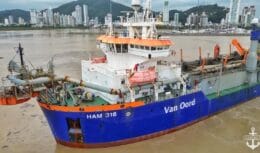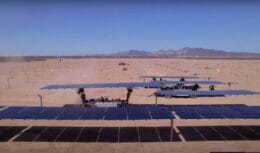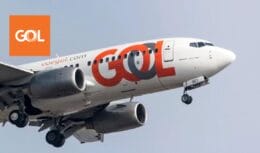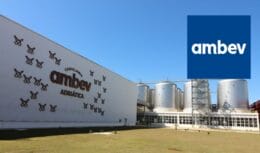
Aiming for sustainability, Heineken will now use an electric vessel and deliver its beers without carbon emissions. The ship is called the Alphenear, and uses its containers as a battery.
The electric ship, which has the name Alphenear, uses innovative technology with containers and lithium-ion batteries to deliver its cargo without carbon emissions. On the same path towards sustainability, the first customer will be Heineken, which intends to be a company with zero carbon emissions by 2040. As a result, the company will deliver its beers without any pollution, contributing to sustainability.
Read also
Electric ship innovates in deliveries without carbon emissions
The ship uses standard size 6 meter containers with a battery totaling 2 MWh, which is equivalent to 36 cars. The greatest innovation of the electric ship is that the containers can be exchanged at a port station, with the same ease and agility as beer containers.
The manufacturer, Zero Emission Services, plans to develop a river fleet with eight ships, 14 battery containers, and eight charging stations. The company intends to have around 30 different routes with its vehicles eventually.
At the moment there is only one route, which is used to transport the Heineken beers, and the batteries will be changed at the river port of Alphen aan den Rijn, and there are only two of them: one for the outward and one for the return.
A 360 tonne reduction in carbon emissions with Heineken's electric vessel
The Netherlands has the largest port in Europe, located in Rotterdam, which is not only connected by rivers to the whole country, but also to France, Switzerland and Germany. For national production to be distributed, it has the largest river fleet on the planet through an intricate system of rivers, estuaries and canals that covers the entire country.
Therefore, ZES calculates that around 5% of the country's carbon emissions come from river ships. ZES's complete fleet of electric ships, by its calculations, should save around 360 tons of CO2 emitted into the atmosphere per year.
Worldwide, ships account for around 3% of greenhouse gas emissions. However, as it is a growing sector and as it is still completely dirty, using the worst quality of fossil fuels, this number could be much higher by 2050, reaching 10%.
Heineken wants to become a green brand similar to its bottles
In addition to using the Alphenear electric vessel to transport its beers, Heineken is also looking for different ways to become increasingly green. Last week, the leader in the beer market entered into a partnership with Omega Energia for the installation of clean energy generation assets in the Northeast, which will provide enough energy to meet 100% of the consumption of 9 distribution centers and 13 breweries in Brazil.
The contract between Heineken and Omega Energia provides for a reduction of 270 tons of carbon dioxide emissions into the atmosphere and, in addition, also provides for the supply of renewable energy for a period of 10 years. The contract will help the Heineken Group complete its mission to be totally clean by 2040.










